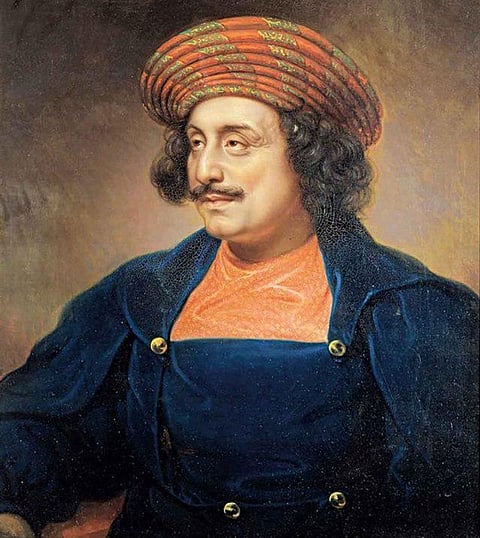
- Home
- न्यूजग्राम
- India
- World
- Politics
- Entertainment
- Culture
- Lifestyle
- Economy
- Sports
- Sp. Coverage
- Misc.
- NewsGram Exclusive
- Jobs / Internships

By- Khushi Bisht
Raja Ram Mohan Roy, a social, religious, and academic revolutionary, known as the "Father Of the Indian Renaissance", is recognized for his leading role in fighting traditions such as Sati, child marriage, and societal divides, as well as promoting education.
He was born into a wealthy and well-educated Brahman family in British-ruled Bengal. Very little is known about his early life and schooling, however, he appears to have grown up with unconventional religious beliefs. He was highly inspired by Western contemporary philosophy, emphasizing rationality and a scientific attitude to life. His primary concern was the societal and religious deterioration in Bengal, where he was born.
Bengali culture was saddled with numerous cruel rites and restrictions throughout the late eighteenth century often referred to as the Dark Age. Complex practices and strict moral standards were enforced, most of which were misapplied and mistranslated from ancient civilizations.
Most widespread societal customs that affected womanhood included child marriage, polygamy, and the most heinous Sati ritual in which widows self-immolated at their husband's funeral pyre.
A painting by Mohammad Rizā showing a Hindu princess committing Sati against the wishes but with the reluctant approval of Emperor Akbar. In the right foreground, attending the Sati on horseback, is the third son of Akbar, Prince Daniyal. Wikimedia Commons
Although the Sati practice offered women the opportunity to participate in the beginning, it gradually evolved into an obligatory ritual, notably for the upper-caste communities. Women were often coerced or even sedated into compliance since they did not want to be subjected to such atrocities.
Raja Ram Mohan Roy protested and spoke out against this inhumane act. He was forthright and offered his views to the East India Company's upper management. He could not stand the violent acts against women and advocated for women's education, widow remarriage, divorce, and other social ills.
In 1828, Roy founded the Brahmo Samaj, a Hindu religious reform society dedicated to combating societal ills. It was India's earliest revolutionary movement, with the goal of reforming the Indian society and educating the people on the real lessons of the Vedas, Upanishads, as well as other Hindu texts.
As a consequence of his tireless efforts to eliminate the Sati practice, Lord William Bentinck the governor of the Bengal Presidency, despite the conservative religious community's indignation, passed the Bengal Sati Regulation, or Regulation XVII, A. D. 1829 of the Bengal Code.
ALSO READ: Durga Vahini: What Is It?
He was also an outspoken critic of his generation's strict caste inequalities. He advocated for equitable educational opportunities for all Indians and spoke out against the caste system. Roy thought that, instead of leading to the improvement of society's state, the fanatical religious doctrines had become sources of harm and damage to human society, as well as causes of problem and befuddlement for the people. As a result, he came to the conclusion that religious reformation is a combination of both social and political modernization.
Raja Ram Mohan Roy's contributions to India have earned him the title of "Father Of the Indian Renaissance." He was well aware of the significance of the contemporary age. He felt that the objective of human civilization should be the unity and interconnectedness of individuals and nations. His goal was to instill in Indians a comprehensive understanding of their cultural identities, as well as to help them realize the truth that was unique to their cultures in a sense of cooperative collaboration.
